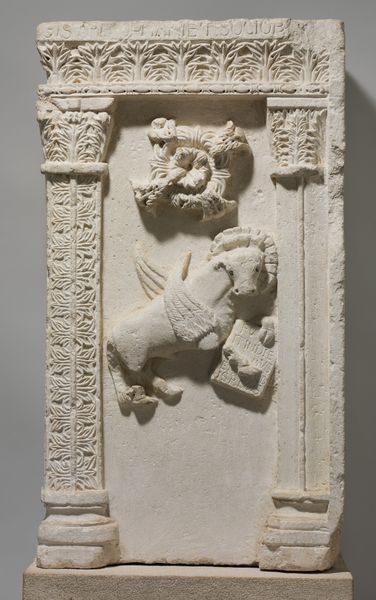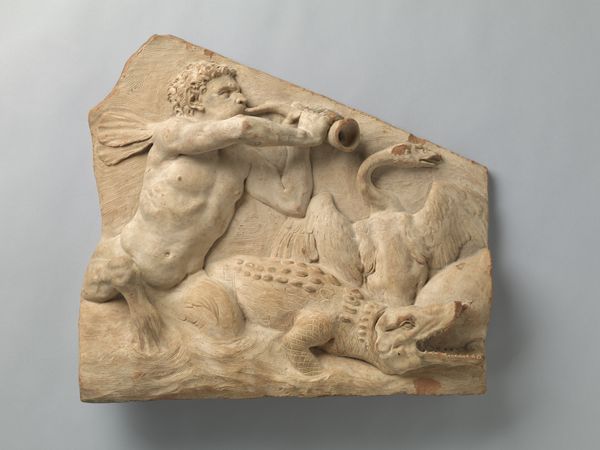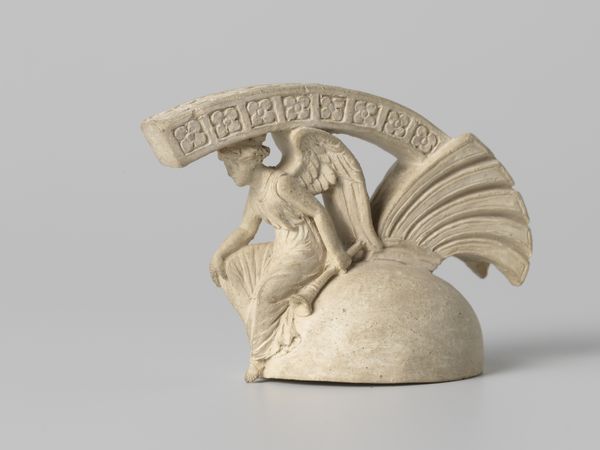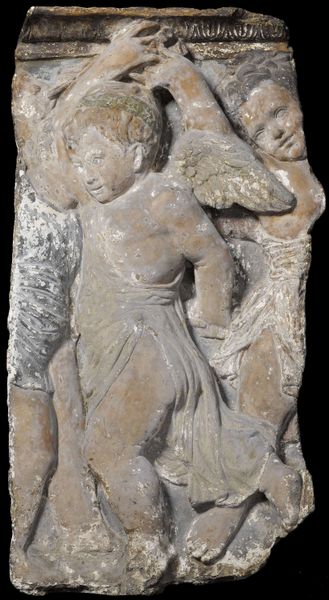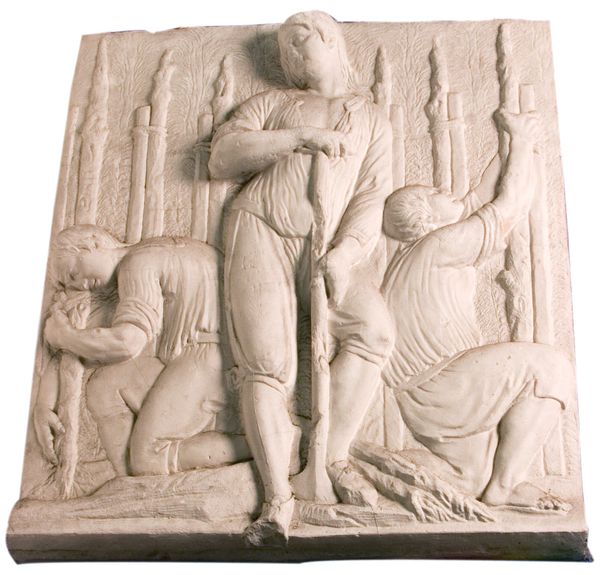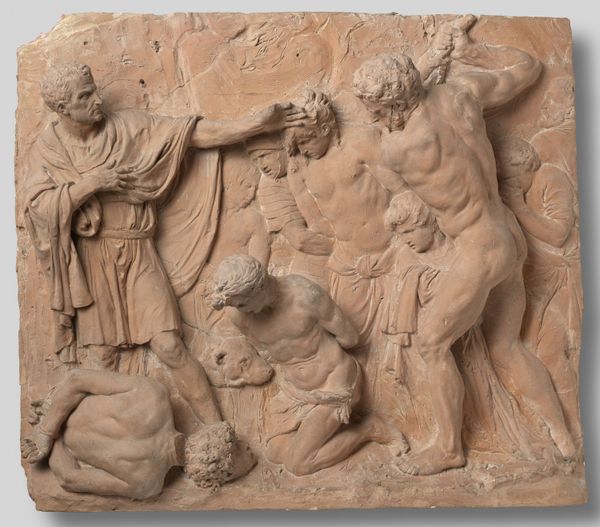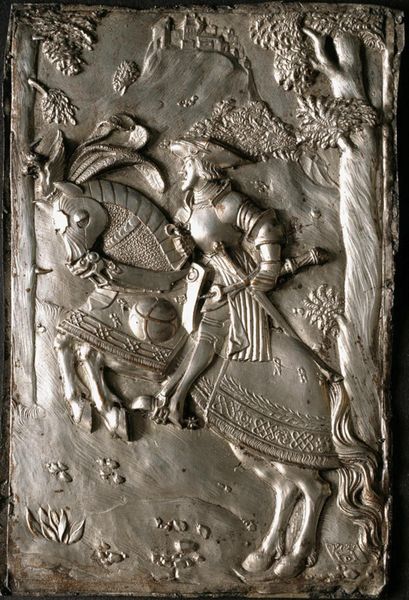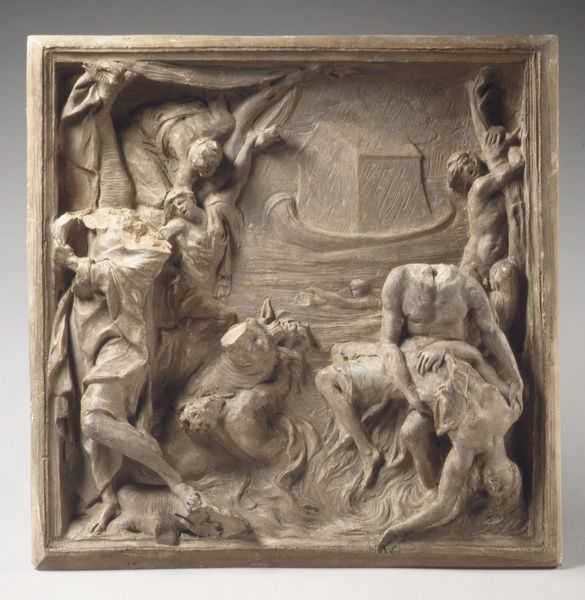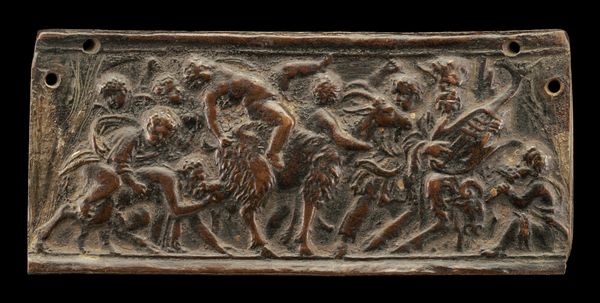
relief, sculpture, wood, marble
#
narrative-art
#
sculpture
#
relief
#
figuration
#
sculpture
#
wood
#
marble
Dimensions: 71 cm (height) x 95.5 cm (width) x 6 cm (depth) (Netto)
Curator: This is Niels Larsen Stevns’ “Den gode Hyrde,” or "The Good Shepherd," dating from around 1911 to 1915. It's a carved relief—mainly marble and some wood—currently housed here at the Statens Museum for Kunst. Editor: My first impression is one of serene simplicity. The monochromatic palette emphasizes the tactile quality of the stone and highlights the gentle curve of the composition, creating a sense of peaceful harmony. Curator: Indeed. Stevns, working within the framework of early 20th-century religious art, often sought to depict moral clarity. This piece clearly draws from Christian iconography and explores themes of care and divine guidance. It speaks to broader social concerns regarding community and responsibility, especially during a period marked by rapid industrialization and social upheaval. Editor: I see how the formal structure supports those themes. Note how the shepherd figure is centrally placed, literally encircled by a halo-like form, giving a vertical stability countered by the horizontal mass of the flock. That structural solidity seems crucial to the overall meaning, no? The figures aren't idealized, and that texture lends a feeling of grounded humanity. Curator: Precisely. Stevns consciously rejected overtly dramatic religious portrayals common in earlier eras, seeking to imbue this common, humble form with the virtues of pastoral care. This artwork serves as a testament to the enduring human need for symbolic reassurance amidst the vagaries of life. We might even consider it in light of contemporary artistic trends, reacting against Impressionism by reaffirming figuration with deeper emotional roots. Editor: Considering it now, that tactile element—the clear tooling and textured surface—does even more work than initially appears. I now think the raw quality brings the viewer closer to the physicality of the act of sculpting and by association to the embodied act of shepherding. It suggests that these virtuous actions aren’t ethereal abstractions, but rather things realized in material. Curator: Exactly. The visible labor ennobles both shepherd and artist. The material and formal simplicity underscores that the real and true may emerge not from grandeur but the simple, iterative and tactile processes we give meaning to. Editor: Seeing how the narrative informs its specific arrangement helps unpack those loaded values we may often take for granted. Curator: Absolutely, the blend of artistic choices is clearly deliberate. An attentive visual engagement does, it seems, bear fruit.
Comments
No comments
Be the first to comment and join the conversation on the ultimate creative platform.

